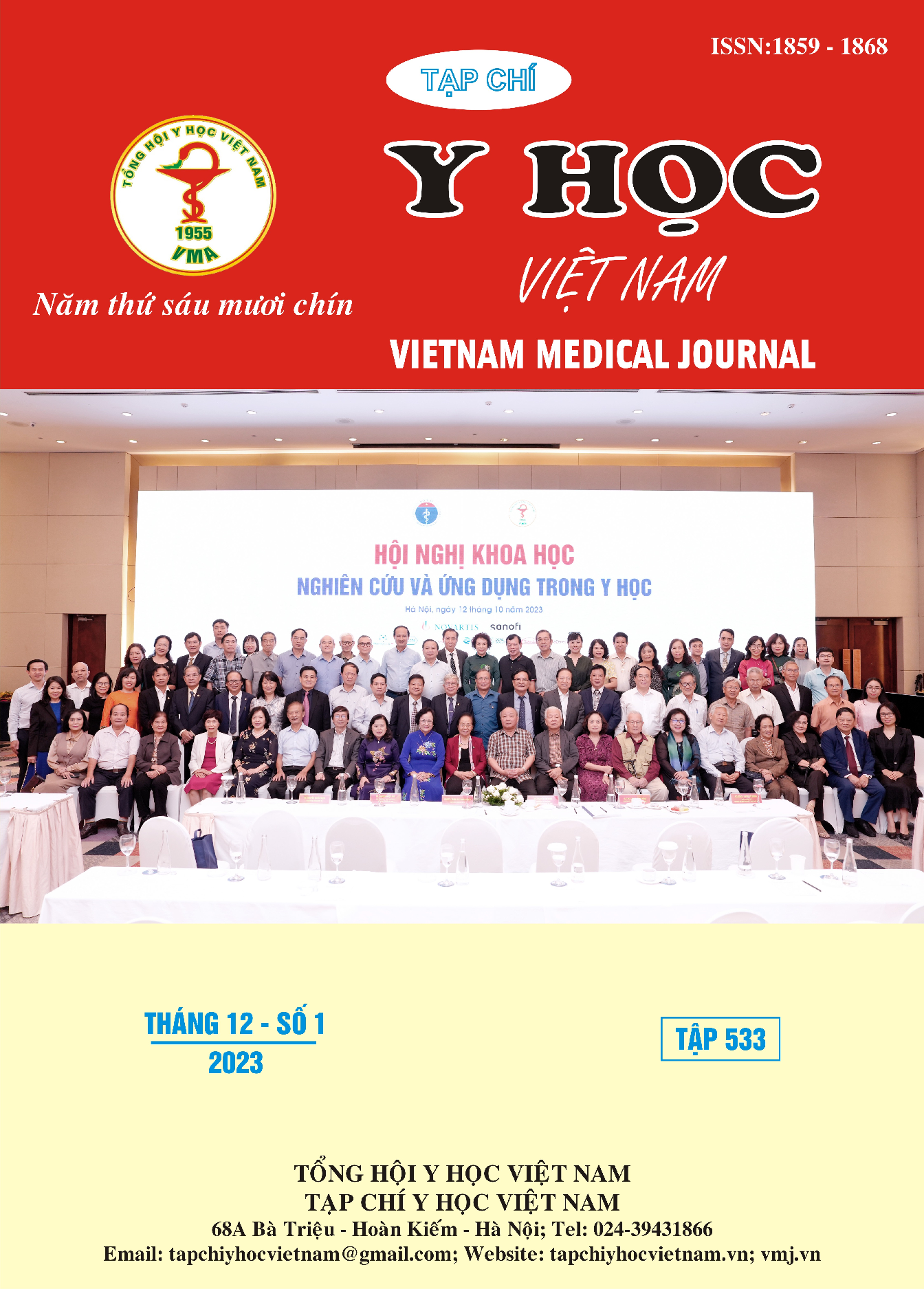SOME CHARACTERISTIC OF PITUITARY TUMOR PATIENTS TREATMENT AT BACH MAI HOSPITAL
Main Article Content
Abstract
Objective: To describe the clinical and paraclinical characteristics of patients with pituitary adenomas and the results of pituitary adenoma treatment before and after surgery at Bach Mai Hospital. Methods: Analytical cross-sectional descriptive study conducted on 56 patients diagnosed with pituitary adenoma at Bach Mai Hospital from January 2022 to July 2023. Research data were processed and analyzed using SPSS 20.0 software. Results: The study was conducted on 56 pituitary adenoma patients undergoing tumor resection surgery. Patients were examined clinically, tested for pituitary hormones before and after surgery, and had magnetic resonance imaging of the pituitary gland. The results of 56 patients were that 51.8% of the tumors did not secrete, 39.3% of the tumors caused hypopituitarism, 5.4% of the tumors secreted GH and 3.6% of the tumors secreted ACTH. ACTH-secreting tumors have the smallest tumor size, the largest tumor size is found in patients with hypopituitarism, the macroadenom/microadenom ratio is 27/1. 100% of secretory tumors (GH-secreting tumors and ACTH-secreting tumors) are non-invasive. Invading upwards and pressing on the ventricles is seen in patients with tumors that cause hypopituitarism and non-secreting tumors. After surgery, test indexes changed but were not statistically significant (p > 0.05). Some types of two types of GH-secreting tumors and ACTH-secreting tumors change GH and ACTH to normal limits (p < 0.05), Blood sugar in patients with GH-secreting tumors is easier to control, blood sugar and insulin dose change significantly. Neurological symptoms due to the tumor such as headaches were reduced (p < 0.05) however eye symptoms are reduced but not significantly (p > 0.05). 39.3% of pituitary adenoma patients had experienced additional complications after surgery, notably diabetes insipidus (23.22%) and hypopituitarism (3,57%). Results of magnetic resonance imaging of the pituitary gland 1 month after surgery, 46.42% of patients no longer had damage, while 26.79% still had damage.
Article Details
References
2. Lê Thanh Huyền. Nhận xét một số đặc điểm lâm sàng, cận lâm sàng của bệnh nhân u tuyến yên trước và sau phẫu thuật. Luận văn Bác sỹ nội trú. Đại học Y Hà Nội. 2015.
3. Nguyễn Khoa Diệu Vân. Nội tiết học trong thực hành lâm sàng. Nhà xuất bản Y học 2021; 8.
4. LacroixA, Feelders RA, Stratakis CA, Nieman LK. Cushing’s syndrome. Lancet. 2015; 386: 913 - 927.
5. Newell - Price JDC. Cushing disease. In: Melmed S, ed. The Pituitary. 4th ed. Academic Press. 2017; 525 - 571.
6. Molitch ME. Diagnosis and treatment of pituitary adenomas: a review. JAMA 2017; 31 (5): 516 - 524.
7. Katznelson I, Laws E, Sholomo M et al. Acromegaly: an endocrine society clinical practice guideline. J Clin Endocrinol Metab. 2014; 99 (11): 3933 - 3951.
8. Viera LN, Boguszewski CL, Araujo LA, et al. A review on the diagnosis and treatment of patients with clinically nonfunctioning pituitary adenomas by the Neuroendocrinology Department of the Brazilian Society of Endocrinology and Metabolism. Arch Endocrinol Metab. 2016. 60 (4): 374 - 390.


